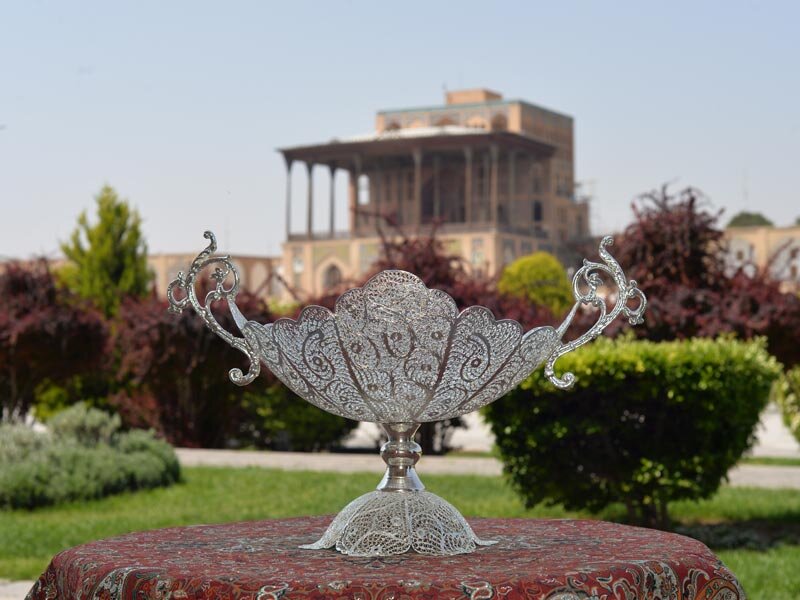Isfahan home to the delicate art of filigree

TEHRAN - Many skilled artisans who work in the delicate craft of filigree can be found in Isfahan. Let’s see how Isfahani artists give life to silver strings.
Persian filigree is a delicate, lace-like artwork made of intertwined silver strings. The art involves coiling, winding, or knitting thin, flexible metal cords and brazing them where they come into contact with other metal cords or metal substructures. It has been widely used for making jewelry and creating vessels since ancient times.
Iranian artists produce intricate, elegant filigree works. They are incredibly skilled at manipulating metal bands to produce works of ornamentation.
It takes a team of four to five craftsmen to practice even the most basic form of filigree artwork.
Artists should sketch out a design by hand first, then follow the patterns, before creating any filigree objects. The silver strands are transformed into filigree works by artisans using Spartan hand tools.

All filigree craftsmen usually are seated in groups, and each one carries out a specific task as they create an artwork. To create holey shapes for finer designs, they carefully twist silver wires using simple hand tools. And finally, silversmiths wash, clean and polish their creations after giving them fire-formed shapes.
Half the world?
Soaked in a rich vibrant history, Isfahan was once been a crossroads of international trade and diplomacy in Iran and now it is one of Iran’s top tourist destinations for good reasons. It is filled with many architectural wonders, such as unmatched Islamic buildings, bazaars, museums, Persian gardens, and tree-lined boulevards. It's a city for walking, getting lost in its amazing bazaars, dozing in beautiful gardens, and meeting people.
The ancient city is renowned not only for the abundance of great historical bridges but also for its ‘life-giving river’, the Zayandeh-Rood, which has long bestowed the city an original beauty and fertility.
Isfahan has long been nicknamed as Nesf-e-Jahan, which is translated into “half the world”; meaning seeing it is relevant to see half the world. In its heyday, it was also one of the largest cities in the region with a population of nearly one million. The cool blue tiles of Isfahan's Islamic buildings, and the city's majestic bridges, contrast perfectly with the encircling hot, dry Iranian countryside.
AFM
